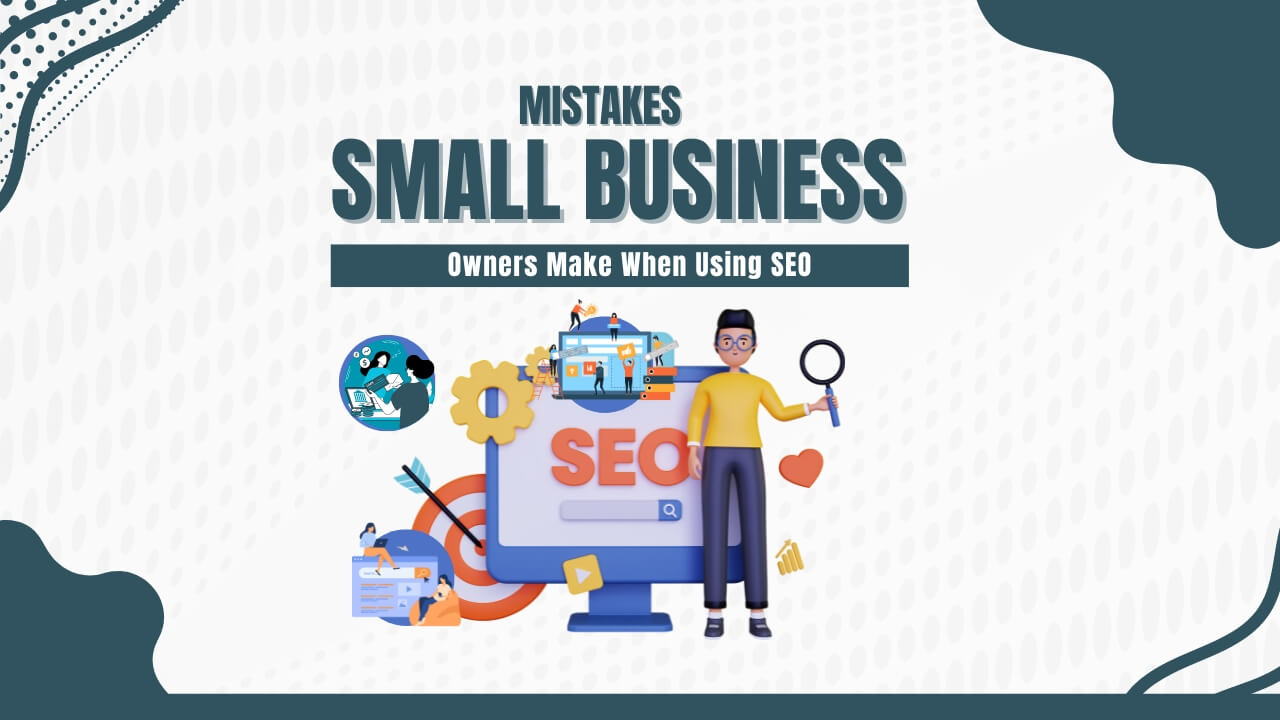In this ever growing era of digital marketing, Google Ads is one of the vital platforms for advertisers mainly aiming to enhance their online visibility and to drive more and more sales.
The ultimate core of the Google Ads mainly lies in the concept of the keyword match type, a fundamental mechanism that mainly controls how keywords are being aligned based on the search queries.
As Sujit Shukla Emphasis, among the various types of matches “phrase match” and “broad match” are basically two of the most preferred and used options, both of the matches come with different characteristics and operational nuances that can effectively influence the performance of the Ads Campaign.
Keyword match types are an important factor to be considered; they do offer advertisers varying levels and also to have a control between their selected keywords and the search queries which users are actively searching in the Google Search engine.
This ultimate control is very important to effectively optimize the ad spend, increasing the ad relevance, and ultimately achieving the desired campaign objectives, whether the aim is to drive sales, generate leads, or to build brand awareness.
Understanding the key difference between the phrase match and broad match, which also includes its advantages and disadvantages, is the ultimate key for advertisers to deploy the right strategy that mainly aligns with the campaign goals and objectives.
Well the main aim of this blog is to dissect these two match types, by effectively providing a detailed exploration of their functionalities, use cases, and their best practices.
By attracting the advertisers with this knowledge, we aim to help them to make informed decisions, thereby maximizing the efficacy of their Google Ads campaigns and to achieve a higher return on investment.
Understanding Keyword Match Types
Keyword match types in Google Ads is basically known as a mechanism that will effectively help the advertisers to specify how closely a user’s search query should match the keywords so that the ads will be triggered.
This functionality is very crucial for the campaign success because it directly influences the visibility of ads, the relevance of traffic, and the efficiency of ad spend.
Google Ads does offer several keyword match types, but its main focus is on phrase match and broad match reveals a spectrum of control and gives immense flexibility to advertisers to achieve their marketing goals.
Why Keyword Match Types Matter
- Control Over Ad Displays: Mainly the match type determines the degree of the matches which is required between the keyword and the search query. This ultimate control will help the advertisers to effectively target their ads more precisely or more broadly, depending on their strategy.
- Relevance of Traffic: By effectively choosing the right match type, advertisers can ensure that their ads are shown to users who are actively searching with the search queries which will be related to their product, easily improving the chances of getting the conversion.
- Cost Efficiency: With the proper use of match types advertisers can avoid wasting ad spend on irrelevant clicks, which indirectly improves the ROI of the campaign.
Understanding these aspects is very important before diving more deeper into the specificities of phrase match and broad match.
Deep Dive into Phrase Match
Phrase match mainly allows advertisers to show their ads on the searches that mainly includes the phrase match keyword or close variation keyword of that phrase, with additional words being added before or after that phrase. It helps to maintain a balance between reach and relevance, offering more control and flexibility as compared to broad matches.
How Phrase Match Works
When using phrase match, advertisers can also highlight their keywords by wrapping their keywords in the double quotation mark. By which Google Ads can tell the search engine to target the exact searches who are matching with the exact phrase or close variations of it, with anything before or after the phrase.
For example, if your phrase matches “women’s hat” your ad might also appear on “buy women’s hats online” but not on the “hats for women.”
Advantages
- Targeted Reach: Phrase match helps to effectively target the users which has specific intent so that it can easily match the advertiser’s offerings which is closely, indirectly leading to the increase in the website traffic.
- Flexibility: It also allows the use of additional words in the search query,providing more reach to the exact match without ignoring the relevancy.
Drawbacks
- Less Control Than Exact Match: There is also a chance of matching with queries that are also less relevant to the exact match.
- Potential for Irrelevant Traffic: if not properly managed, phrase match will be attracting the clicks from less relevant searches, which indirectly increase the cost without having single conversion.
Best Practices
- Use Negative Keywords: To refine your targeting strategy and to prevent ads from appearing on irrelevant searches, it is better to combine both the phrase match with the robust list of negative keywords. .
- Monitor Search Query Reports: Do regularly review the queries as it indirectly helps you by triggering your ads and based on that you can effectively adjust your keyword strategy and can ensure more efficiency and relevancy.
Exploring Broad Match
Broad match, is basically a default match type in the Google Keywords which offers the widest reach by showing ads on searches that includes a single word in the keyword, in any order, along with synonyms, or related searches, and also other variations. It is mainly designed to capture a broad range of audience indirectly maximizing the exposure and in capturing the interest of the relevant customers who might be interested in your products or services through related search queries.
How Broad Match Works
To use the broad matches, advertisers simply have to enter their keywords without using a specific symbol. For instance, using the broad match keyword “women’s hats” can trigger your ad for searches like “buy ladies caps,” “women’s accessories,” or even “hats.” The broad match mainly leverages Google understanding the language nuances, which might also include symbols, to capture a wide range of search intent.
Advantages
- Maximum Exposure: Broad match keywords can effectively reach a large range of audience related to your keywords, indirectly resulting in the increase of the website traffic.
- Discoverability: This match type effectively helps advertisers to discover new search terms and market segments that are relevant to their services.
- Simplicity: There’s no need for extensive keyword lists or complex match type strategies, making it easier for new advertisers to start with Google Ads.
Disadvantages
- Less Targeted Traffic: The broad nature of this match type means ads can also appear to the match type that are also less related to the advertised product or service, indirectly lowering the relevancy of the website traffic.
- Higher Risk of Irrelevant Clicks: With a wider net, there is a high chance of attracting the clicks from users who are also not interested in what you’re offering, which can indirectly be resulted in the waste ad spend.
Best Practices
- Use in Conjunction With Other Match Types: Do target broad match alongside phrase or exact match keywords to balance the reach and the relevance.
- Implement Negative Keywords: Actively using negative keywords will also help you to filter out the unwanted traffic.
- Regularly Review Performance Data: Do effectively monitor the search queries which are triggering your ads and refine your keyword strategy to effectively optimize the performance and ROI.
Comparative Analysis: Phrase Match vs. Broad Match
Deciding between the phrase match and broad match for Google Ads campaigns,advertisers have to leverage several factors.
This comparative analysis explores the control over the ad placements, relevance of the website traffic, cost considerations, campaign management complexity, and best use cases, providing a clearer understanding of how and when to implement the match type effectively.
Control Over Ad Placements
Phrase Match: It does offer a moderate control by ensuring the ads are appearing on the relevant searches that includes the exact phrase or close variations, with additional being used before and after the keyword. This control will help you to target the specific intent audience.
Broad Match: It provides the least control, displaying the ads for a wide range of related search keywords, which also includes the related search queries. Ultimately leading to a higher volume of impressions but less precision in targeting.
Relevance of Traffic
Phrase Match: Helps to attract more targeted and relevant traffic by matching the ads to searches that effectively aligns with the advertiser’s specific phrase. This relevance often results in the higher click through rate or conversion rate.
Broad Match: This match helps to capture the broad range of audience, which includes relevant users but also who has a tangential interest in the product or service. While this increases exposure, it may indirectly dilute the website traffic quality and will reduce the conversion efficiency.
Cost Considerations
Phrase Match: Can be more cost-effective in the long run by focusing mainly on the ad spend on more relevant clicks, offering a better ROI for the advertisers who have a clear a clear understanding of their target audience and also about their search queries.
Broad Match: Broad match might sometimes incur higher costs because of its larger volume of less targeted clicks. However, it is mainly beneficial to capture a wide audience, which can be particularly useful in the initial stages of the campaign or mainly for the broad match appealing products.
Campaign Management Complexity
Phrase Match: It does require more detailed keyword research and ongoing optimization to maintain the balance between the reach and the relevance. Advertisers might regularly review the search query reports to refine their keyword lists and the negative keywords.
Broad Match: Although simpler to set up due to its wide reaching nature, effective use of broad match also demands a careful and effective monitoring to avoid spending on irrelevant clicks. The use of negative keywords is very important to effectively focus on the campaign.
Best Use Cases
Phrase Match: It is ideal for the advertisers who have a clear understanding of their audience’s search intent and are targeting specific search queries without limiting the potential traffic as much as exact match does. It’s also highly suitable for the campaigns where ads budget and targeting are the main priorities.
Broad Match:It is well suited for the new campaigns which are continuously seeking to maximum their visibility and for advertisers who are looking to explore new market segments or keyword opportunities. It’s also effective in industries with a wide range of related search intents effectively capturing the users intent and leading to the conversions.
Practical Example
Imagine two advertisers are launching campaigns for a new line of eco-friendly water bottles. One advertiser are using the phrase match keywords like “eco-friendly water bottles,” aiming to attract the users who are actively searching with the phrases related to their search queries and keywords. The other opts for broad match to effectively capture a wide range of audience who are mainly interested in the eco-friendly products, which includes those who are searching for a “sustainable drinkware” or “green hydration solutions.”
The phrase match campaign might comparatively see a higher conversion rate due to more targeted traffic, while on the other hand broad match campaigns could drive higher overall traffic volume, which also includes the users interested in related but broader eco-friendly topics. Each strategy has its merits and demerits depending on the campaign goals: accurate targeting and efficiency versus broad market exploration and visibility.
Strategic Considerations for Advertisers
While navigating the complexities of Google Ads, choosing the right keyword match choosing the right keyword is very important for the campaign success. The choice between the phrase match and broad match should be guided by strategic considerations that perfectly aligns with the campaign goals, budget constraints, and desired audience targeting. Here are key factors advertisers should considered to make an effective decision.
1. Define Campaign Objectives
- Brand Awareness vs. Conversion Goals: If the main and the primary objective is to build brand awareness, broad matches can effectively cast a wider net, capturing a diverse range of audience. For campaigns mainly focusing on driving conversions or sales, phrase match might offer the targeted precision needed to attract the high-intent users.
2. Consider Budget Allocation
- Managing Ad Spend: Advertisers with limited budgets might mainly prefer phrase match to ensure that their spending is effectively spent on the relevant and potentially converting traffic. Those who have more flexible budgets might use broad matches to explore a wider range of keyword opportunities and to gather valuable insights of unexpected search queries.
3. Evaluate Market Understanding
- Depth of Keyword Research: Advertisers with a deep understanding of their audience’s search behavior and clear keyword insights might mainly prefer phrase match. Broad match might be highly effective for the advertisers who are mainly looking to expand their understanding of the market and to discover new keyword opportunities.
4. Assess Campaign Management Resources
- Resource Availability for Optimization: Campaigns which are using the phrase match might require more ongoing optimization efforts, including regular review of the search term reports and adjustment to their keyword lists. Advertisers with the resources to manage these tasks might find phrase match comparatively more beneficial. Broad match, while simpler to implement, still requires more careful monitoring to refine the targeting with the negative keywords and to adjust bids to control the costs.
5. Balance Reach and Relevance
- Finding the Optimal Mix: it is the most effective strategy involving a mix of both match types, allowing advertisers to effectively balance the reach and the relevance. Starting with broad matches which will help you to identify the valuable keyword themes and user intent patterns, which can then be targeted more precisely with phrase match keywords.
6. Experimentation and Adjustment
- Continuous Learning and Refinement: Digital advertising landscapes are dynamic, necessitating an approach of experimentation. Testing different keyword match types, individually or in combination, and analyzing their performance can provide valuable and actionable insights, enabling advertisers to refine their strategy to get better results.
Implementing the Strategy
For example, an eco-friendly clothing brand, for instance, launching a new line of sustainable activewear might mainly prefer using the broad matches initially to effectively understand the range of search queries of the potential customer use.
Valuable Insights gathered from this approach can then be informed to use in the phrase match to target high-performing keywords more precisely, such as “sustainable running clothes” or “eco-friendly yoga wear.”
In essence, the choice between phrase match and broad match is not mutually exclusive. Advertisers should view it as an opportunity to leverage the strengths of each match type, guided by strategic considerations that align with their campaign objectives, budget, and market understanding. This approach allows the advertisers to navigate Google Ads more effectively, maximizing campaign performance and the ROI.
Conclusion: Harnessing the Power of Match Types in Google Ads
Navigating the intricacies of phrase match and broad match in Google Ads represents a critical aspect of a successful digital advertising strategy. Throughout this exploration, we’ve delved into the functionalities, advantages, disadvantages, and strategic applications of each match type, offering advertisers a comprehensive guide to making informed decisions that align with their campaign goals.
Key Takeaways:
- Phrase Match offers a balanced approach, providing advertisers with the ability to target ads to users based on specific search intents while maintaining a level of flexibility for additional context before or after the phrase.
- Broad Match, the default setting in Google Ads, casts the widest net, allowing ads to be shown on searches that relate to the keyword in any way, including synonyms and related queries. This match type is invaluable for maximizing exposure and discovering new keyword opportunities.
- Strategic Use of match types involves understanding and aligning them with campaign objectives, budget considerations, and market insights. Advertisers must evaluate the trade-offs between reach and relevance, control and flexibility, to deploy the most effective keyword strategy.
Embracing Experimentation and Flexibility:
The dynamic nature of online search behaviors and the continuous evolution of Google’s algorithms mean that what works today may not be as effective tomorrow. Successful advertisers remain agile, constantly experimenting with different match types, adjusting their campaigns based on performance data, and staying abreast of Google Ads updates. This iterative process of learning and optimization is key to refining keyword strategies and achieving sustained success.
Encouragement for Advertisers:
We encourage advertisers to view phrase match and broad match not as binary choices but as complementary tools in their advertising toolkit. By understanding the nuances of each match type, advertisers can craft nuanced campaigns that leverage the strengths of both, fine-tuning their approach based on real-world performance and strategic goals.
In conclusion, the effective use of keyword match types in Google Ads is both an art and a science, requiring a blend of strategic thinking, ongoing experimentation, and adaptation. Whether you’re aiming to maximize brand visibility, target specific consumer intents, or explore new market segments, the judicious use of phrase match and broad match can pave the way for enhanced campaign performance and a stronger return on investment.
Let your advertising goals be your guide as you navigate the possibilities within Google Ads, and remember, the journey to digital marketing success is one of continuous learning and adaptation.






